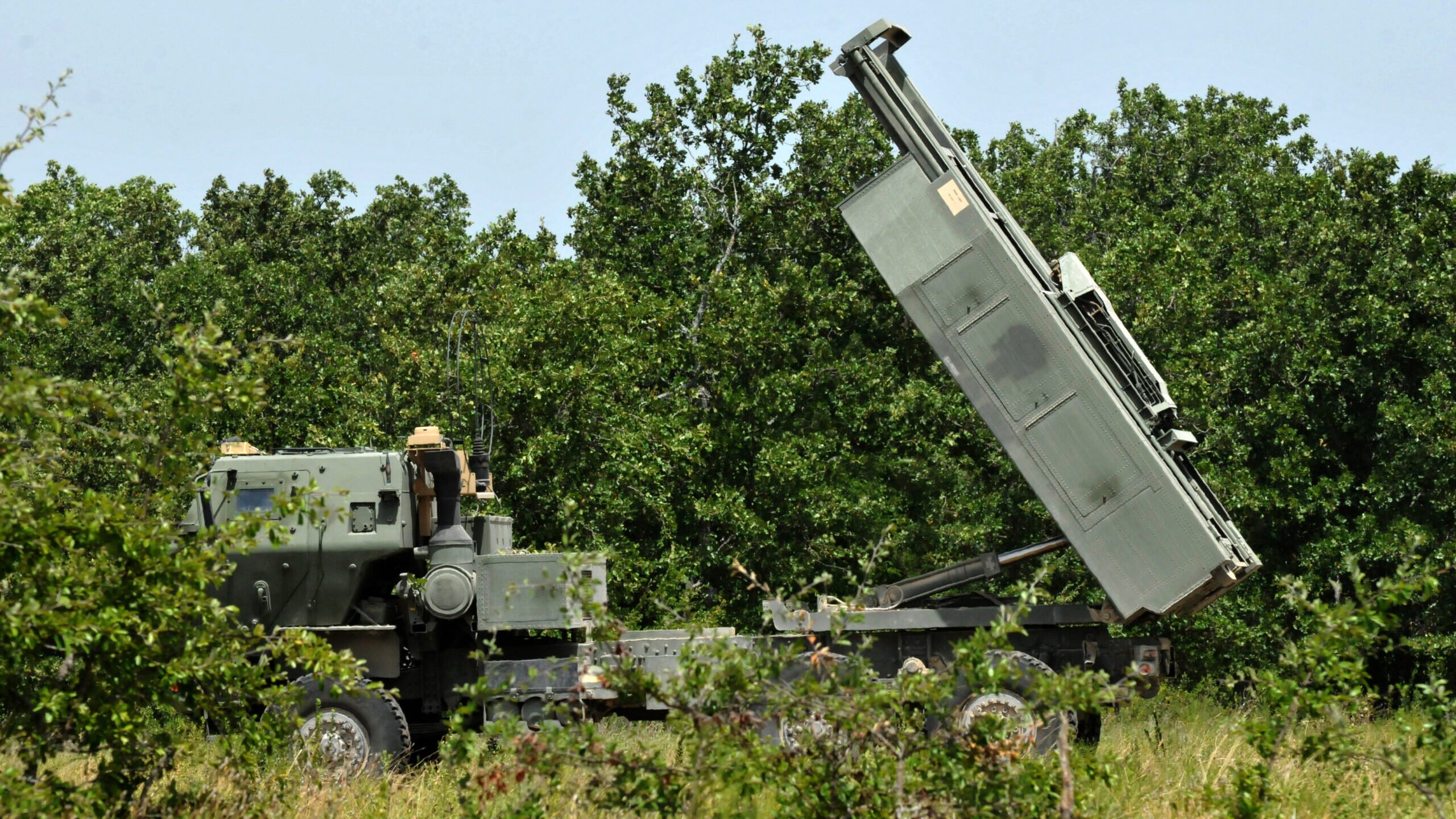
Soldiers with the 4th Battalion of the 133rd Field Artillery Regiment rehearse launching operations with a M142 High Mobility Artillery Rocket System at Fort Hood, Texas, July 16, 2018. (Staff Sgt. Michael Giles/US Army National Guard)
WASHINGTON — Lockheed Martin is dialing up production of the High Mobility Artillery Rocket System amid the Ukrainian military’s success in using the system to fend off Russian forces over the past few months.
Lockheed plans to ramp up HIMARS production from 60 to 96 units per year and has already taken steps to expedite production of the new launchers in expectation of higher demand, Lockheed CEO Jim Taiclet announced during an earnings call today.
The company has met with its long lead supply chain and spent $65 million — which will eventually be paid back by the US government — to fund parts in advance, shortening the time needed to manufacture the rocket system, he said. “That was without a contract or any other memo or whatnot back from the government. We just went ahead and did that because we expected it to happen. So those parts are already being manufactured now,” he said.
The US Army has telegraphed a requirement to increase HIMARS production to 96 launchers per year through a request for information published this summer. According to the solicitation, the service could sustain a maximum annual production rate of 96 units through fiscal 2028.
As of Oct. 14, the United States had committed 38 HIMARS to Ukraine since Russia’s invaded the country in February, the Defense Department said in a factsheet. Of that total, 20 HIMARS have been provided to Ukraine through the presidential drawdown authority, which sources them from the US military’s existing stockpile.
The department is purchasing the remaining 18 HIMARS as part of a $1 billion arms package funded by the Ukraine Security Assistance Initiative, which was announced in September. Those launchers have yet to be produced by Lockheed and could take “years” to deliver to Ukraine, a Pentagon official said at the time.
This summer, the Pentagon praised the rocket system, which has a range of about 40 miles depending on the munition, as having a “significant impact,” allowing Ukrainian forces to strike more distant Russian military targets than its previous artillery allowed.
The war in Ukraine has ramped up demand for precision fire capability across the board, with Lockheed’s HIMARS and Guided Multiple Launch Rocket System (GMLRS) — as well as the the Javelin anti-tank missile system it co-produces with Raytheon — all seeing “significant” interest from foreign customers as well as the US military, as it seeks to refill its own stocks, Taiclet said.
The company is modernizing the Camden, Ark.-based facility where it produces weapons such as HIMARS and has begun cross-training its employees to work across multiple product lines, he said.
Some weapon systems have already undergone a bump to production since the start of the year, with HIMARS moving from an annual rate of about 48 to 60 launchers since the conflict started, Lockheed officials have previously stated.
“We’re putting the best and newest manufacturing technology into some of these product lines first so that when the ramp comes, we can pivot to it quicker,” Taiclet said.
From F-16s to NATO, Argentina’s moves tilt West, but ties to China to last
There are flashpoints to watch as Argentina navigates its future between the polar attractions of Washington and Beijing, including future defense deals and a deep space facility.


























